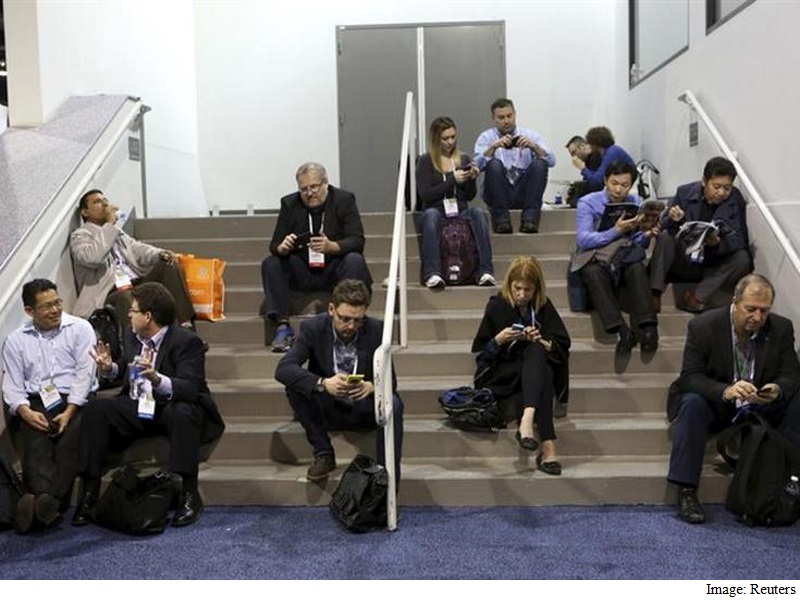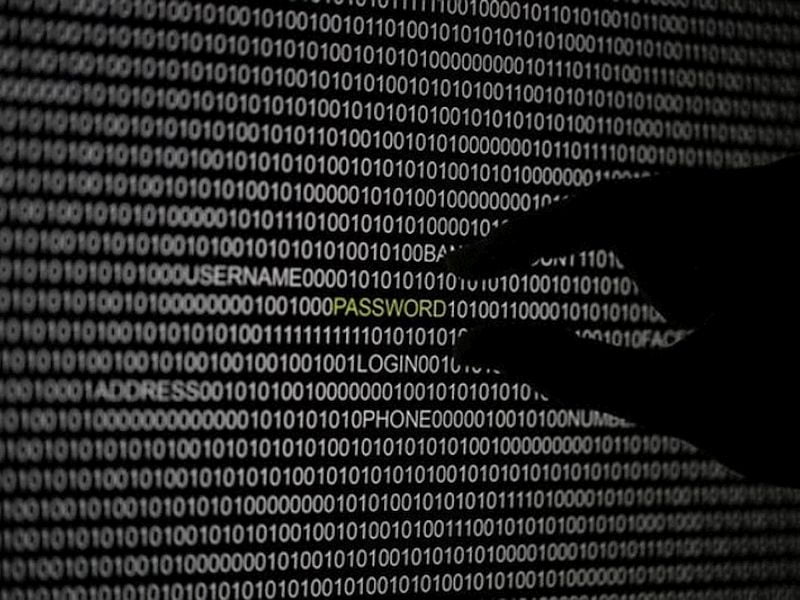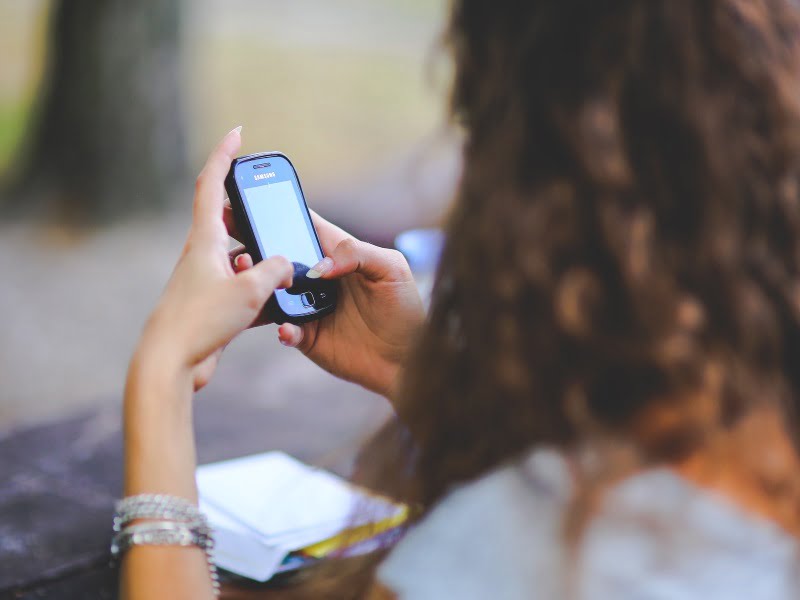
When the Centers for Disease Control and Prevention published new guidelines 18 months ago regarding the radiation risk from cellphones, it used unusually bold language on the topic for the US health agency: “We recommend caution in cellphone use.”
The agency’s website previously had said that any risks “likely are comparable to other lifestyle choices we make every day.”
Within weeks, though, the CDC reversed course. It no longer recommended caution, and deleted a passage specifically addressing potential risks for children.
Mainstream scientific consensus holds that there is little to no evidence that cellphone signals raise the risk of brain cancer or other health problems; rather, behaviors like texting while driving are seen as the real health concerns. Nevertheless, more than 500 pages of internal records obtained by The New York Times, along with interviews with former agency officials, reveal a debate and some disagreement among scientists and health agencies about what guidance to give as the use of mobile devices skyrockets.
Although the initial CDC changes, which were released in June 2014, had been three years in the making, officials quickly realized they had taken a step they were not prepared for. Health officials and advocates began asking if the new language represented a policy change. One state official raised the question of potential liabilities for allowing cellphones in schools.
CDC officials began debating how to back away from their recommendation of caution, internal emails show. One official proposed saying instead that other countries – “specifically the United Kingdom and Canadian governments” – recommended caution. Others suggested pointing to determinations by agencies in Finland, Israel and Austria. Ultimately, though, no other country was mentioned.
Bernadette Burden, a CDC spokeswoman, said in a statement that the original changes made in June 2014 stemmed from “a CDC-wide effort to make health information for the public easier to understand” but led to confusion that the agency was making a new policy statement.
“To correct that misperception and to confirm that CDC had not changed its policy or recommendations, CDC posted a clarification statement,” she said, adding that the cellphone industry did not weigh in before changes were made.
Christopher J. Portier, former director of the National Center for Environmental Health, the CDC division that made the changes, disagreed with the decision to pull back the revised version. “I would not have removed it,” he said in an interview. “I would have been in support of a recommendation that parents look carefully at whether their children need cellphones or not.”
Portier, who led the center when the revision process was initiated, said he believed parents should have been presented “with enough information to say caution isn’t ill advised, because we really don’t know, and there are enough indicators to say we should be cautious.”
Portier also served on the International Agency for Research of Cancer, a branch of the World Health Organization that in May 2011 called low-frequency radiation from cellphones and other devices a possible carcinogen, a designation that has also been used for coffee and pickled vegetables. He said the IARC declaration led him to seek a review of the CDC guidelines.
Portier’s view is not shared by many other experts. While sporadic claims about cellphones and cancer go back several decades, most U.S. organizations echo the Federal Communications Commission, which says radio-frequency energy is not “effectively linked” with “any known health problems.”
Radiation released by nuclear bombs is obviously harmful. Known as ionizing radiation, it is powerful enough to remove electrons from atoms. By contrast, radio-frequency energy is a form of non-ionizing radiation given off by cellular and portable phones, Wi-Fi routers, baby monitors and countless other devices.
John D. Boice Jr., president of the National Council on Radiation Protection and Measurements, said his own research had found “no evidence for associations with brain tumors or any other cancers.”
The European Environment Agency, like some others in Europe, strikes a more cautious tone than U.S. agencies. “Scientific opinion is split on the issue – many different studies have reached different conclusions based on the same evidence,” the European agency says. It advocates “a precautionary approach to policymaking in this area.”
Regarding children, the European agency says, “There is sufficient evidence of risk to advise people, especially children, not to place the handset against their heads.”
Given the state of the research, the industry has rejected health concerns. When Berkeley, California, passed an ordinance last spring requiring retailers to warn customers that radiation emitted by cellphones could be hazardous, CTIA-The Wireless Association, an industry trade group, sued. It called the ordinance “scientifically baseless and alarmist,” adding that the federal government had determined that “cellphones approved for sale in the United States, however worn, are safe for everyone.” The lawsuit is pending.
The study cited most often is Interphone, a multination review published by the IARC in 2010. CTIA, in a statement, noted that Interphone found “overall, no increase in risk.” But Interphone did find “some indications of an increased risk of glioma,” a type of brain tumor, among the heaviest 10 percent of cellphone users, though “the researchers concluded that biases and errors limit the strength of these conclusions and prevent a causal interpretation.”
Dr. Elisabeth Cardis, Interphone’s principal investigator, said in an interview, “I can’t say for sure there’s an effect, but I can’t say for sure there’s no effect.”
However, the usage rates studied were far lower than those seen now, she said. The median call time in the study was 2 to 2 1/2 hours per month. A Nielsen study in 2014 found that Americans used smartphones more than 34 hours a month, on average, though more often for games or social media than for communications.
Cardis is conducting a large government-funded study in Europe of the potential risks of cellphone use among children. Nevertheless, she uses a mobile phone herself, as do her children – though she said it was prudent to use headsets or speakerphone, or to text, instead of holding the device next to your ear.
“If there’s a risk, it’s likely to be greater for exposures at younger ages,” she said, “simply because the skull is thinner and the ears are thinner in children than in adults. Basically your phone is closer to your brain.”
The CDC’s internal email traffic shows a lengthy revision process for the agency’s recommendations. After the announcement by the IARC in 2011, one agency official wrote that there was “outdated information on our current website.” Some changes were made within days, though they did not mention the IARC determination.
That would take another three years. It coincided with the CDC’s effort to use clearer language on its website, a bureaucratic process that led to tension between the communications staff and the agency’s Radiation Studies Branch.
One draft of the new language was tested on a focus group in 2013, prompting complaints that the “material did not provide any concrete answers.” Another draft was criticized by an outside expert for including “statements that are scientifically incorrect,” an agency official wrote.
One official proposed posting three different versions of the guidelines on the website, a step rejected by another as confusing.
The vetting process for the revised guidelines posted in June 2014 included an outside expert, James M. Smith, former head of the Radiation Studies Branch. “I certainly had no intention of suggesting a policy change, since there was no overriding science to justify that,” Smith said. In retrospect, he said, “it was just a bad choice of words.”
The new guidelines were not noticed until several weeks after they were first posted. The change aroused alarm within the agency, and concerns from some outside experts. An official from the Vermont Health Department forwarded a letter he had received asking about the state’s legal liability for allowing wireless technology in public schools and libraries.
Within the CDC, officials began to retreat from the language. In emails, Robert C. Whitcomb Jr., head of the Radiation Studies Branch, began assuring colleagues at other agencies and universities that the new guidelines were “not an official policy.”
Another CDC official called it “a teachable moment,” while a third said she had “an incredible guilt complex” for her role in the guidelines published in June 2014.
Portier, who left the CDC in 2013, sees it differently. “I would have been happy with the original revision,” he said.
Today, the agency’s guidelines include a sidebar explanation noting that they were changed, and then changed again. “During this process, revisions were introduced which inadvertently led some visitors to the Web page to believe that a change in position had occurred.”
“Some organizations recommend caution in cellphone use,” the agency’s guidelines now say. But the CDC is not one of them.
[“source-gadgets.ndtv”]





